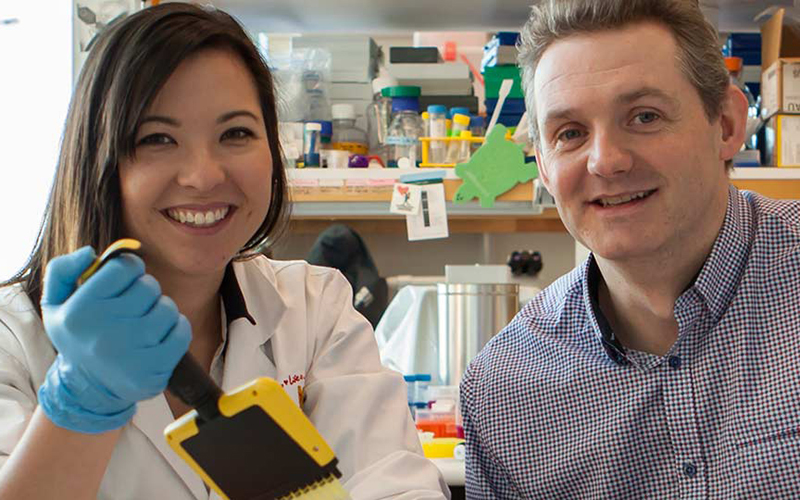Search
Research
Multi-institutional analysis of treatment modalities in basal ganglia and thalamic germinomaCentral nervous system germinomas are treatment-sensitive tumors with excellent survival outcomes. Current treatment strategies combine chemotherapy with radiotherapy (RT) in order to reduce the field and dose of RT. Germinomas originating in the basal ganglia/thalamus have proven challenging to treat given their rarity and poorly defined imaging characteristics. Craniospinal, whole brain, whole ventricle, and focal RT have all been utilized; however, the best treatment strategy remains unclear.

News & Events
Landmark research hopes to increase survival rates for aggressive childhood cancerA new combination of drugs could help to increase survival rates with fewer side effects for some children with one of the most aggressive forms of childhood brain cancer.
Research
Developing and characterising juvenile models of aggressive paediatric brain cancers for the evaluation of novel immunotherapies.While profound treatment responses have been realised using immunotherapy for some cancer types, this is yet to be seen for paediatric brain cancer patients.
Research
Boosting the influenza vaccine schedule in children with cancer: a prospective open-label studyCurrent immunization guidelines recommend one dose of influenza vaccine for children aged ≥9 years and two doses for younger or vaccine-naïve children. However, children receiving chemotherapy have an attenuated immune response. We performed a prospective open-label study in children undergoing treatment for cancer at Perth Children's Hospital, Western Australia, to examine the safety and efficacy of a boosted influenza schedule.
Research
A New Model to Investigate the Action of Radiation and Cigarette Smoke on Head and Neck Cancer CellsSmokers are at an increased risk of developing mucosal head and neck squamous cell cancers (HNSCCs) and have a worse prognosis when treated. The cellular and molecular mechanisms underlying the latter has not been established. We therefore developed an in vitro model to investigate the effects of radiation and smoking on mucosal HNSCCs.
Research
Coupling of response biomarkers between tumor and peripheral blood in patients undergoing chemoimmunotherapyPlatinum-based chemotherapy in combination with anti-PD-L1 antibodies has shown promising results in mesothelioma. However, the immunological mechanisms underlying its efficacy are not well understood and there are no predictive biomarkers to guide treatment decisions.
Research
“I Don’t Get to Play With My Mum Anymore”: Experiences of Siblings Aged 8–12 of Children With Cancer: A Qualitative StudySiblings of children with cancer have been shown to experience disruption in multiple domains including family, school, and friendships. Existing literature on siblings' experiences focuses on older children or on a broad range of ages.
Research
Population-level 5-year event-free survival for children with cancer in AustraliaEvent-free survival considers other adverse events in addition to mortality. It therefore provides a more complete understanding of the effectiveness and consequences of treatment than standard survival measures, but is rarely reported at the population level for childhood cancer.
Research
'Walking their walk': Reducing conflict between families of ill children and the medical professionI review recent high-profile court cases to underscore the changing landscape of conflict and the central role that the media (and social media in particular) can play
Research
Contemporary survival endpoints: An international diffuse intrinsic pontine glioma registry studyThis study defines PFS and OS, and is the first describe post-progression survival in a large cohort of children with DIPG.
